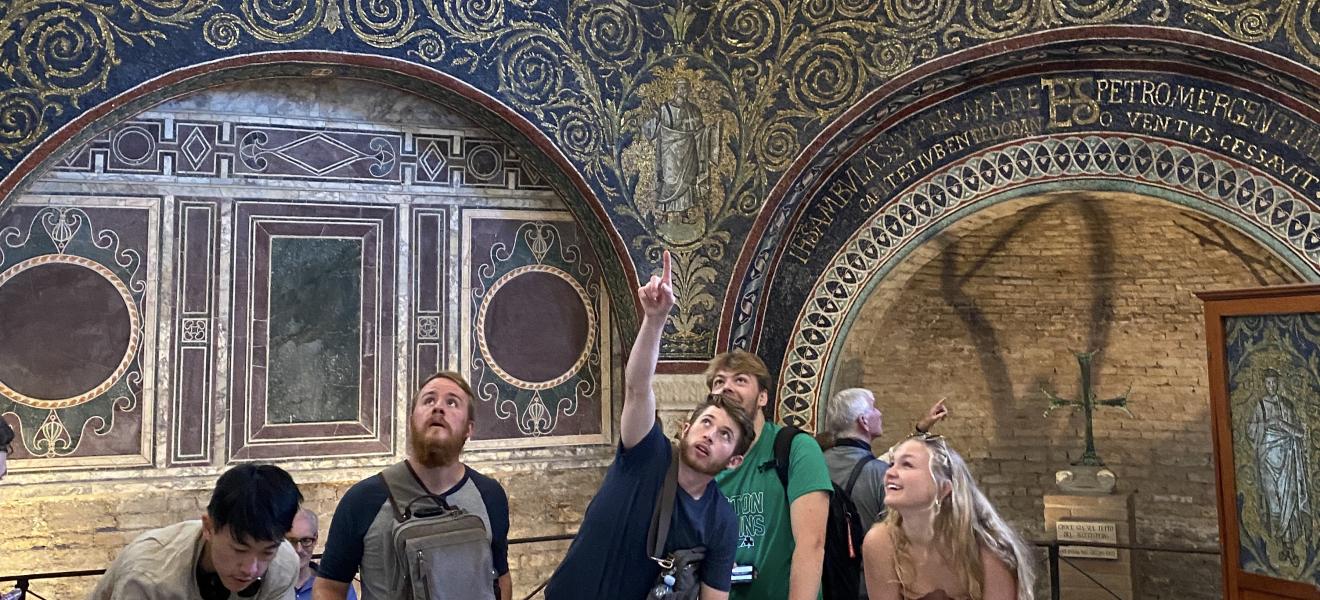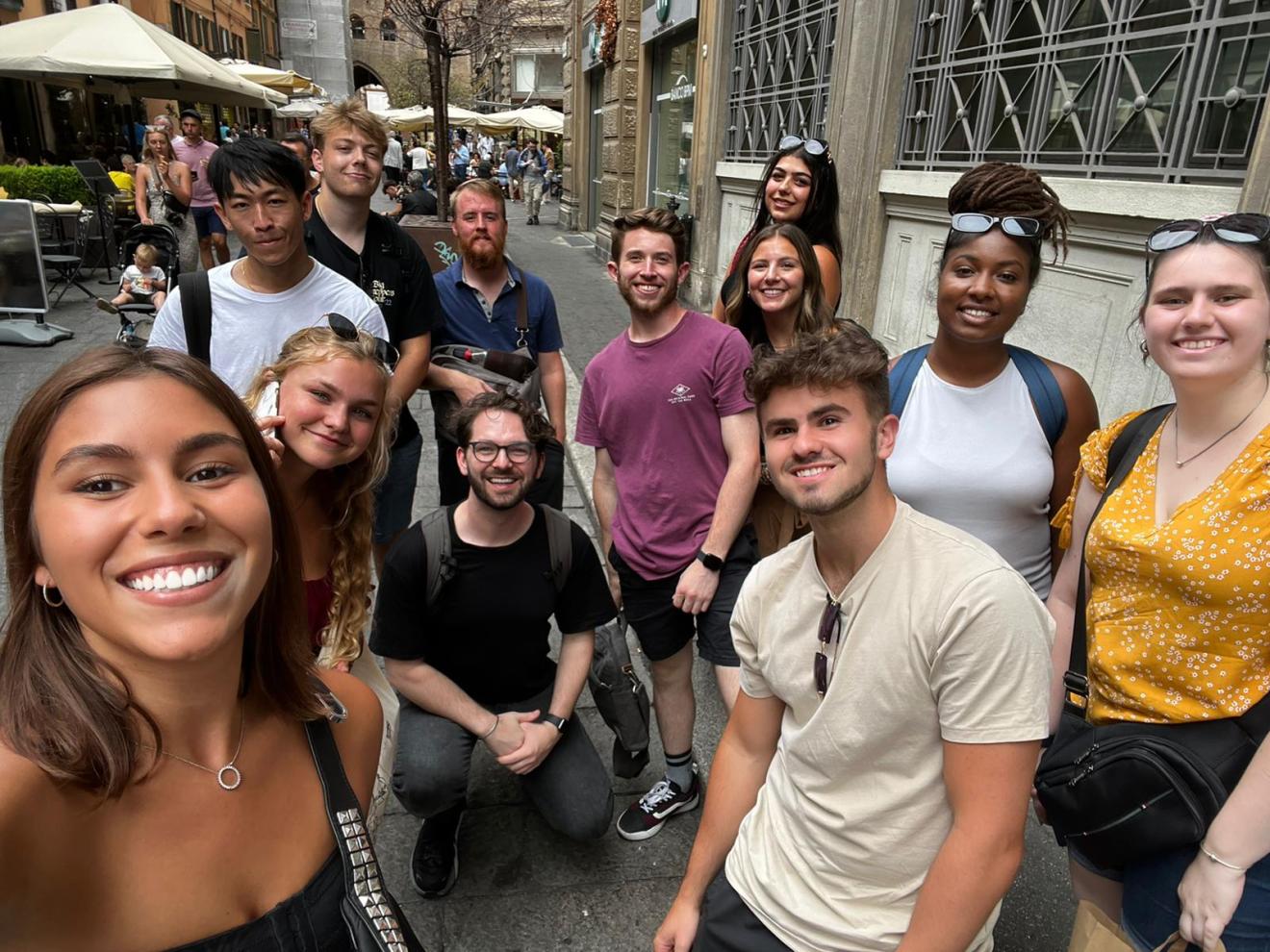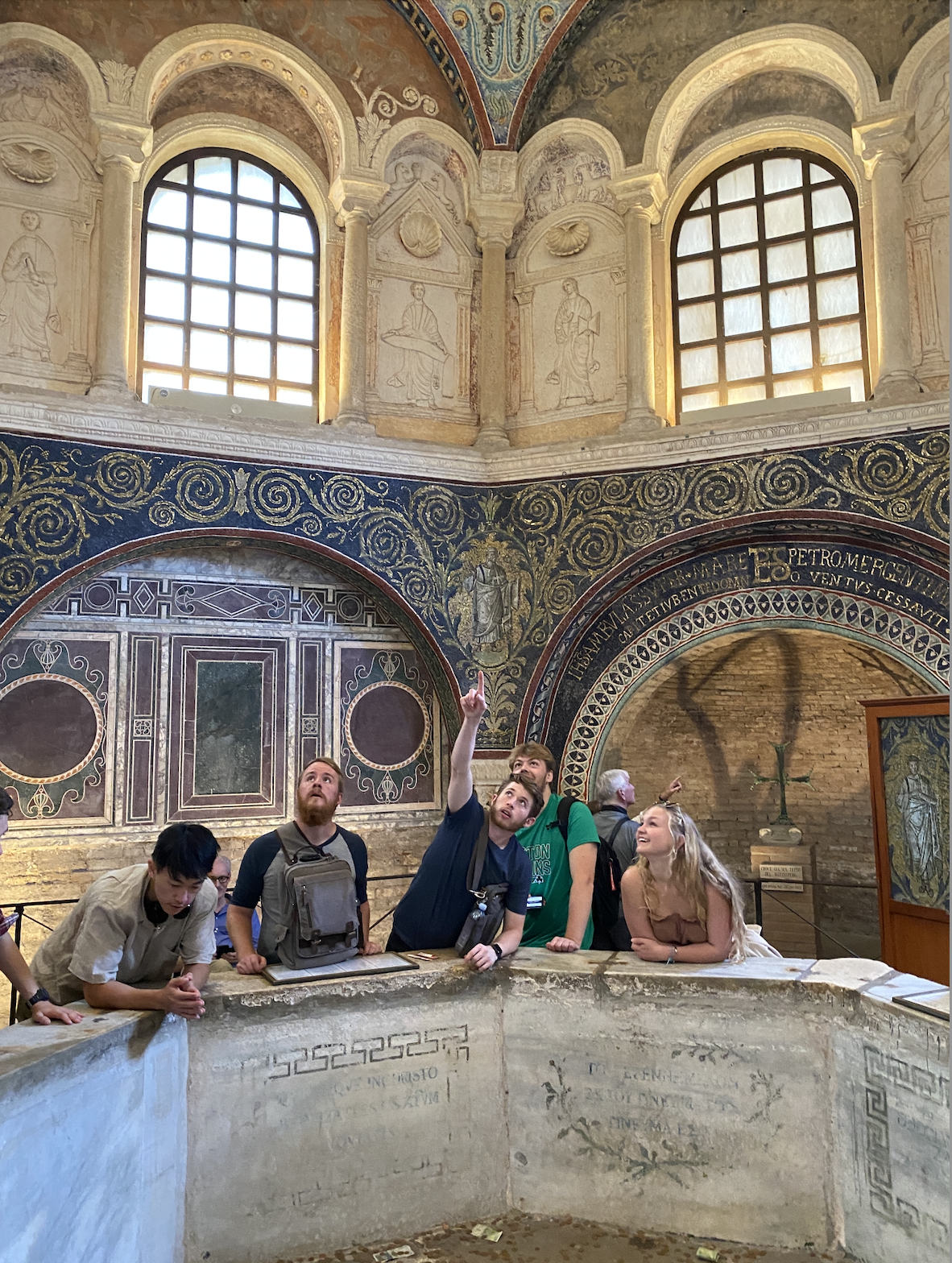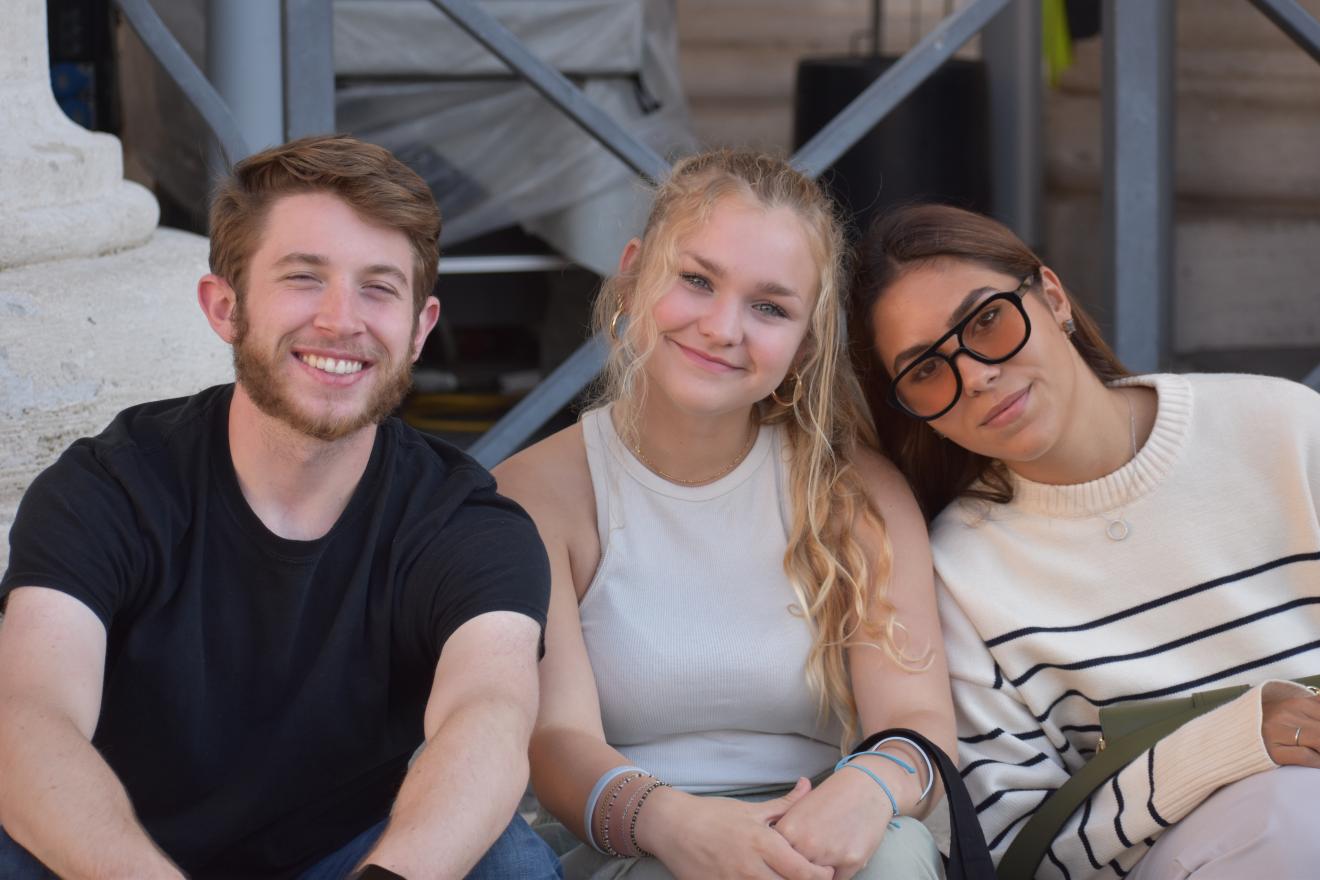Architecture Students Learning Italian History and Culture in Urbino

Students from Wentworth's Architecture program are currently studying in the historic Italian city of Urbino
Nestled among the foothills of the Apennines and within sight of the Adriatic Sea, the walled city of Urbino once played host to a flourishing independent movement in Renaissance art and architecture during the 15th century.
Today, the historic hilltop town, lively as ever, hosts several thousand university students from all over the world, including—for the first time this fall—students from Wentworth Institute of Technology’s School of Architecture and Design.
At the start of the semester, a group of 12 Architecture seniors set off for Urbino to join students and faculty from the University of Texas at San Antonio, which has been running its own study abroad program out of the UNESCO world heritage city for more than a decade.
While students live in the historic center of town, their classes are based in the mid-century modern hillside complex Collegi Universitari di Urbino, designed by architect Giancarlo de Carlo. De Carlo’s “city campus” and other thoughtful insertions into the urban fabric of Urbino not only serve as a beautiful background for class but also stand as potent examples of how to design at the nexus of city and countryside, and within richly complex historic contexts.
Over the course of the semester—as part of their Italian history and culture class, as well as their field sketching seminar—students visit a different Italian city almost every single week, including Rome, Florence, Venice, Verona, and Ravenna. In each location, sites and tours are customized by the faculty to support their studies and paint a fuller, more realized portrait of Italian innovation across the centuries.

The team of Wentworth students, under the guidance of Professor Samuel Maddox, are exploring the various ecologies, economics, and labor processes behind “prodotti marchigiani”—food products specific to the Marche region—such as Casciotta d’Urbino cheese, Rosso Conero wine, and the elusive white truffle. With a deeper understanding of the making of these local food products, and their unique relationship to the future of Italian countryside, students will propose and design novel and innovative facilities for production, more socially oriented spaces for enjoyment and education, and more dynamic and resilient systems for recruiting and maintaining labor and managing resources.
To keep up with the students, their work in Urbino, and their travels around Italy, you can follow their individual study abroad Instagram accounts, an ongoing “visual essay” assignment for their Italian history and culture course.


